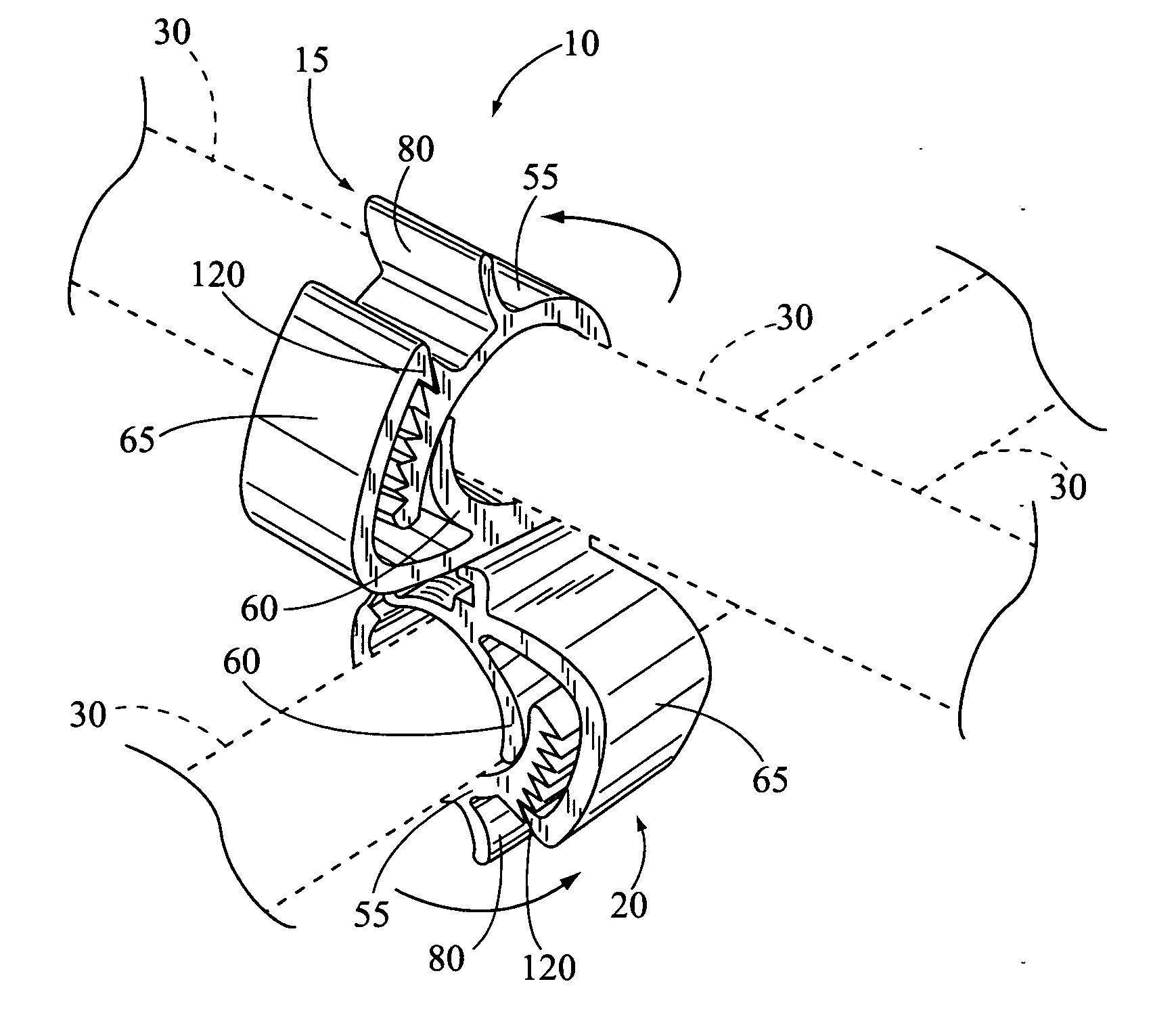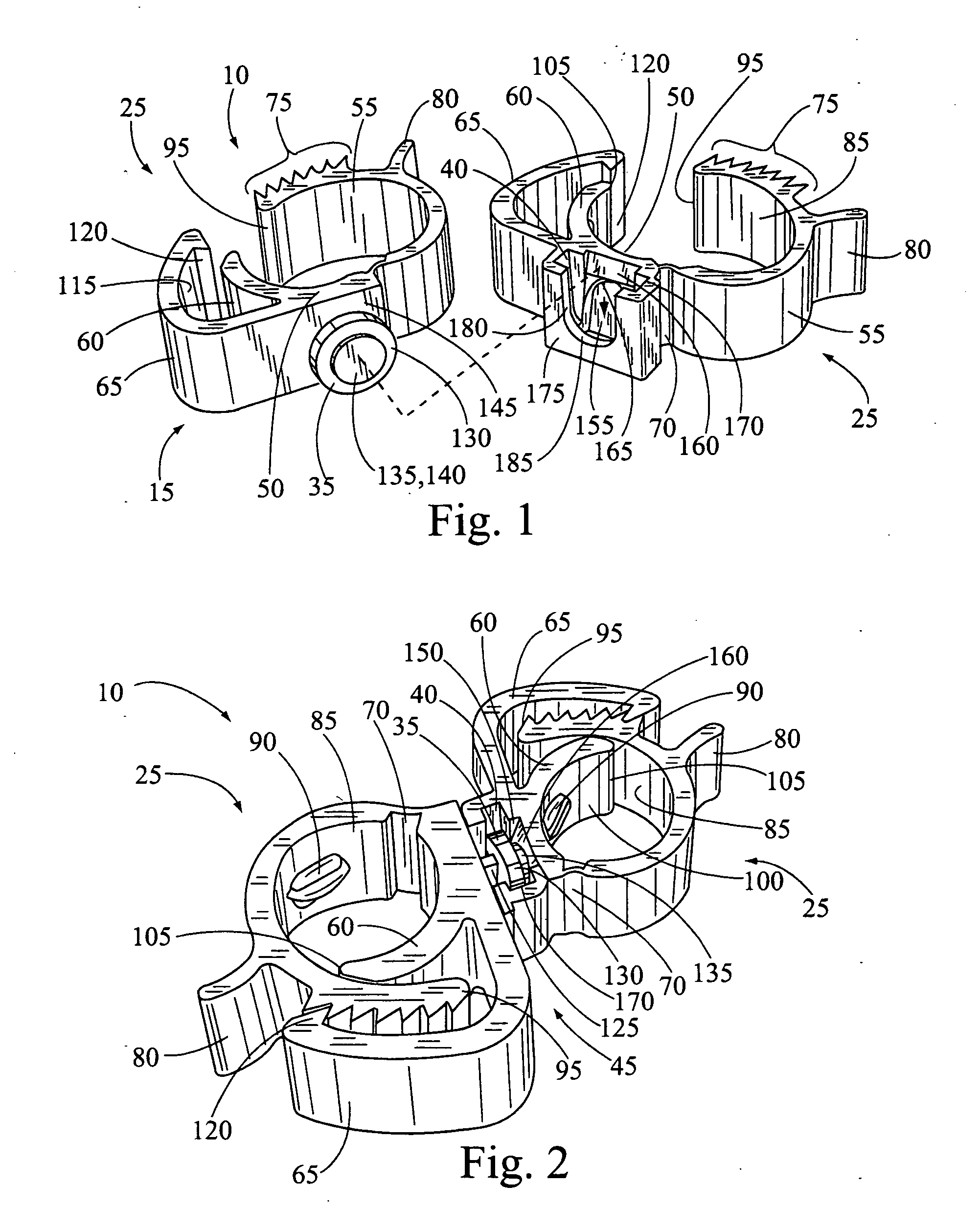Swiveling rebar fastener
a rebar and swivel technology, applied in the direction of rod connections, couplings, manufacturing tools, etc., can solve the problems of steel wire, wire may rust an appreciable amount, and reduce the strength of the wire,
- Summary
- Abstract
- Description
- Claims
- Application Information
AI Technical Summary
Benefits of technology
Problems solved by technology
Method used
Image
Examples
Embodiment Construction
[0017] One embodiment of the fastener of the current invention comprises a two distinct clamp pieces that are pivotally connected to each other, thereby permitting an installer to couple any two pieces of rebar at their respective intersection regardless of the angle formed between the pieces. One embodiment is preferably comprised of a plastic material thereby obviating any rust related problems common with steel wire ties. Additionally, because the fastener physically separates the pieces of rebar joined at an intersection from each other, there isn't a location for excess moisture to pool and simultaneously corrode the pieces at the intersection. Further, because the pieces of rebar are separated, there is a much smaller chance for moisture to wick from one piece to another. Additionally, if two pieces of rebar comprising different base materials are used, their will be no galvanic corrosion between them at the intersection. Another advantage of the one embodiment fastener is tha...
PUM
 Login to View More
Login to View More Abstract
Description
Claims
Application Information
 Login to View More
Login to View More - R&D
- Intellectual Property
- Life Sciences
- Materials
- Tech Scout
- Unparalleled Data Quality
- Higher Quality Content
- 60% Fewer Hallucinations
Browse by: Latest US Patents, China's latest patents, Technical Efficacy Thesaurus, Application Domain, Technology Topic, Popular Technical Reports.
© 2025 PatSnap. All rights reserved.Legal|Privacy policy|Modern Slavery Act Transparency Statement|Sitemap|About US| Contact US: help@patsnap.com



